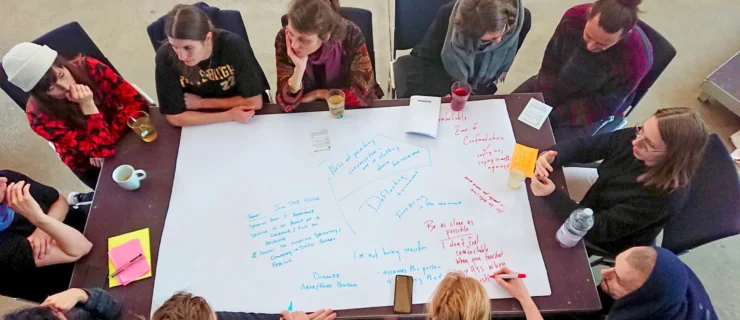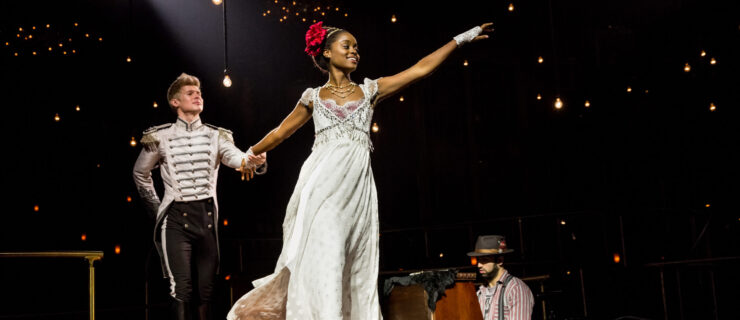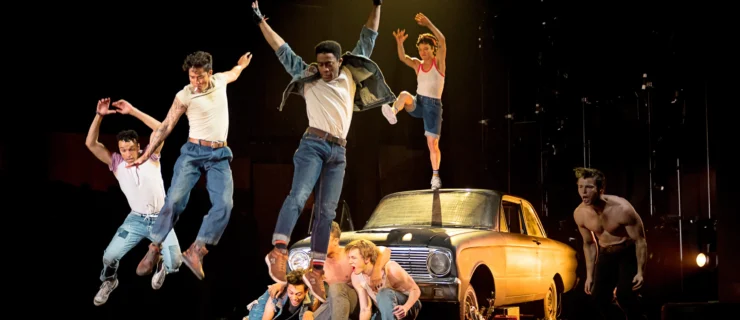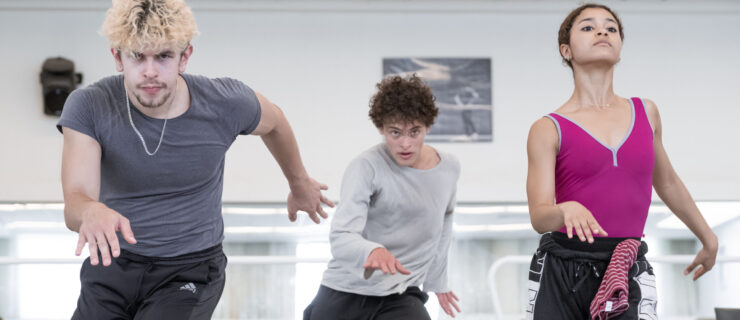Ballet Arizona
Ballet Arizona
Phoenix Symphony Hall
Phoenix, Arizona
April 9–11, 2004
Reviewed by Kenneth LaFave
Even George Balanchine didn’t try this: a full-length, abstract ballet with an overarching structure; the three acts of his Jewels often stand alone. By contrast, Ballet Arizona Artistic Director Ib Andersen’s Mosaik is a two-act, indivisible entity. The former star of the Royal Danish and New York City Ballets has absorbed Balanchine’s aesthetic, bringing it to bear on a powerful new ballet.
Andersen used an expanded classical vocabulary to convey Mosaik’s complex theme, which might be summarized as “opposites attract and become each other.” The ballet opened with a male figure (Joseph Cavanaugh) outlined against a panel of multidirectional lines, suggesting possibility but also the burden of choice. Cavanaugh evinced a majestically grave presence as overseer of the first half’s tragically earthbound population.
The first act asserted ballet’s principle of lightness against all things heavy. A critical element of Andersen’s set (he designed both scenery and costumes) was a thick, flat line, inscribed across a horizontally positioned strip, that emphasized Earth, gravity, and the horizon—the challenges the dancers must transcend. The fight against these limits took form in a series of solos, duets, and ensembles. Taking on the role of hero, Michael Cook danced out a transformation into lightness paired with the fluid Natalia Magnicaballi, while Cavanaugh found his counterpart in the magnetically hyperextended Nancy Crowley.
Act II reversed direction. The dancers, led by whirlwind Astrit Zejnati, celebrated their newly won verticality to airy music by Rossini. Beneath abstract aluminum sculptures—endlessly looped configurations that looked like Möbius strips gone mad—Zejnati partnered Yen-Li Chen-Zhang, the epitome of classical technique, in a pair of duos that bracketed exuberant, Romantic-style ensembles. The first duo repeated a key moment from Act I in which the woman fell into the man’s arms. Its first appearance had moved things toward lightness; this second signaled a slow unwinding back toward gravity.
The ballet climaxed as Zejnati and Chen-Zhang danced to a Schubert funeral march: Their return to the earth complete, the two lay down as if in their graves. But Andersen left his audience with a sense of triumph as the company flooded the stage for a sort of Dance of Possibilities to uplifting music from Tchaikovsky’s Symphony No. 6.
For more information: www.balletarizona.org



